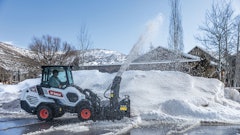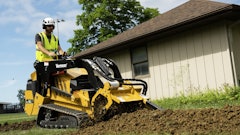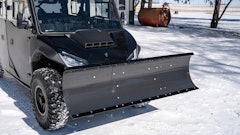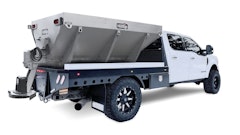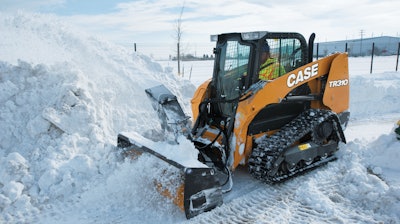
The snow removal industry is becoming more competitive each year. As that happens, the margin of error between profitability and survival is slim.
For large commercial snow removal contractors, the shift from trucks and plows to construction equipment — skid steers, compact track loaders, wheel loaders, compact wheel loaders and backhoes — provides significant operational advantages.
Is it time for you to add more equipment and give the pickup and plow a rest? Here are eight reasons to consider adding more iron to your snow removal fleet:
1. Responsiveness
When it snows, does it make more sense to have your employees try to manage a route, and fight road conditions and traffic to service your customers, or to drive to strategically parked pieces of equipment that allow them to plow one or more accounts with that machine? This provides a number of advantages:
- Plowing begins sooner = faster responsiveness = greater customer satisfaction.
- The employee “clocks in” when he gets to the lot with the machine. Their time is now 100% billable, and labor costs are not wasted driving from account to account.
2. Labor efficiency
While every lot is different, construction equipment presents the opportunity for a higher percentage of productive work to take place. Trucks are only removing snow when moving forward. Too much time is wasted with trucks having to go in reverse.
Skid steers are not only more maneuverable than a truck to clean around islands and light poles, but skid steers are also more efficient. They can push one way, spin around and push the other way. Add in the advantages provided by attachments such as a sectional snow pusher, which removes more snow on the first pass than fixed blades or pushes, and these machines also help remove snow in fewer total passes.
3. Fuel savings
Pickup trucks feature engines with greater horsepower. Why perform a job on a platform that runs at 300 to 400 horsepower when equipment that operates at 74 to 200 horsepower will work just as well? The most common machines in snow removal applications range from 74 to 110 horsepower.
Also, consider the fuel burned when driving from the shop to the lot, from lot to lot, and back to the shop. Head-to-head, construction equipment provides lower total overall fuel costs.
4. Wear and tear
In addition to fuel savings, there’s also less wear and tear caused by a lower-horsepower engine and its components than that of a higher-horsepower pickup truck. This helps improve uptime and long-term reliability.
5. Liability
Minimizing liability is all about reducing exposure. Construction equipment parked at accounts does this in a couple of ways.
- Your employees are not driving company-owned trucks on snow-covered and icy roads. This minimizes the chances of accidents and the corresponding liability to your company.
- A piece of equipment and an operator dedicated to one or two lots make it more manageable to keep the lot cleared during a snow fall. Managing several accounts throughout a route increases the chances for snow accumulation and slip and falls.
6. Visibility
Along the same lines, construction equipment generally provides greater visibility to all sides of the machine than pickup trucks, and better visibility down to the attachment that’s performing the work.
Wheel loaders and compact wheel loaders are taller than most trucks and provide a better vantage point to people, cars and other surrounding objects. The maneuverability of skid steers and compact track loaders minimizes the need to operate in reverse.
7. Attachment flexibility
Thanks to auxiliary hydraulics, quick couplers and (generally) universal mounting designs, construction equipment provides greater flexibility for switching between and using different types of attachments, from pushes to snow blowers and sweepers.
8. Dealer support
Through telematics and planned maintenance programs, construction equipment dealers can maintain consistent visibility to the performance and health of the equipment and proactively address maintenance needs before they turn into larger issues.
Each application and company is different, but these eight points can lead to reduced operating costs and greater customer satisfaction.
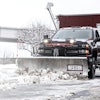
![Gravely Pro Turn Mach One My23 Dsc03139 Edit 1200x800 5b2df79[1]](https://img.greenindustrypros.com/mindful/acbm/workspaces/default/uploads/2025/10/gravely-pro-turn-mach-one-my23-dsc03139-edit-1200x800-5b2df791.BucBnDoN22.jpg?auto=format%2Ccompress&fit=crop&h=100&q=70&w=100)
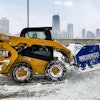


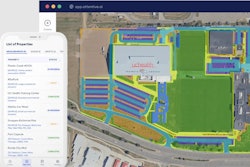


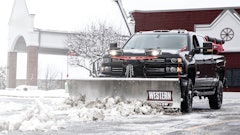
![Gravely Pro Turn Mach One My23 Dsc03139 Edit 1200x800 5b2df79[1]](https://img.greenindustrypros.com/mindful/acbm/workspaces/default/uploads/2025/10/gravely-pro-turn-mach-one-my23-dsc03139-edit-1200x800-5b2df791.BucBnDoN22.jpg?ar=16%3A9&auto=format%2Ccompress&fit=crop&h=135&q=70&w=240)
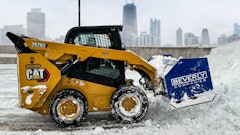

![Kubota Snow ah3 Sgv25ua[1]](https://img.greenindustrypros.com/mindful/acbm/workspaces/default/uploads/2025/10/kubota-snowah3sgv25ua1.bAUoUSziui.png?ar=16%3A9&auto=format%2Ccompress&bg=fff&fill-color=fff&fit=fill&h=135&q=70&w=240)


